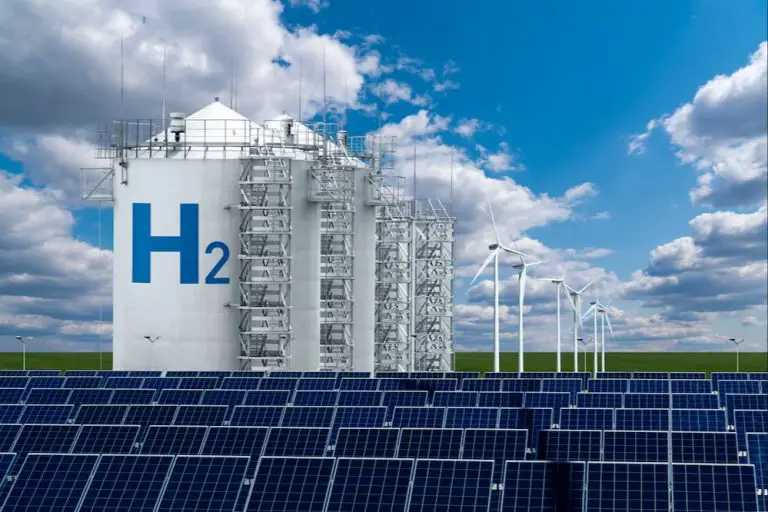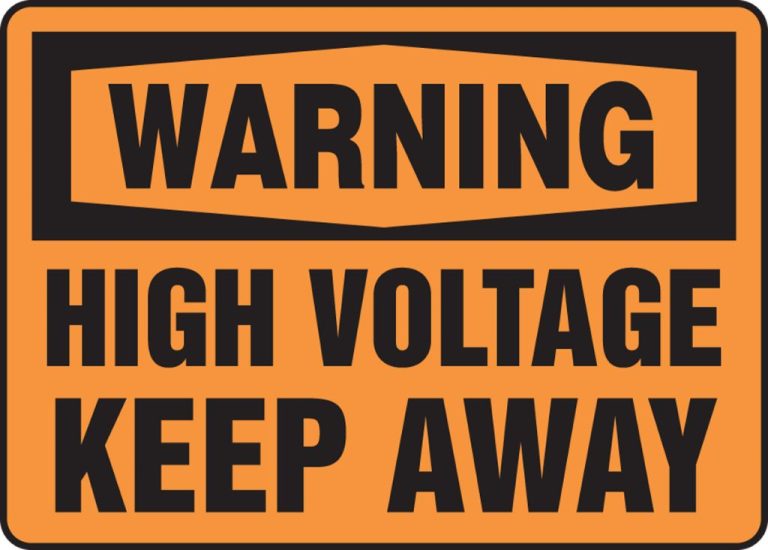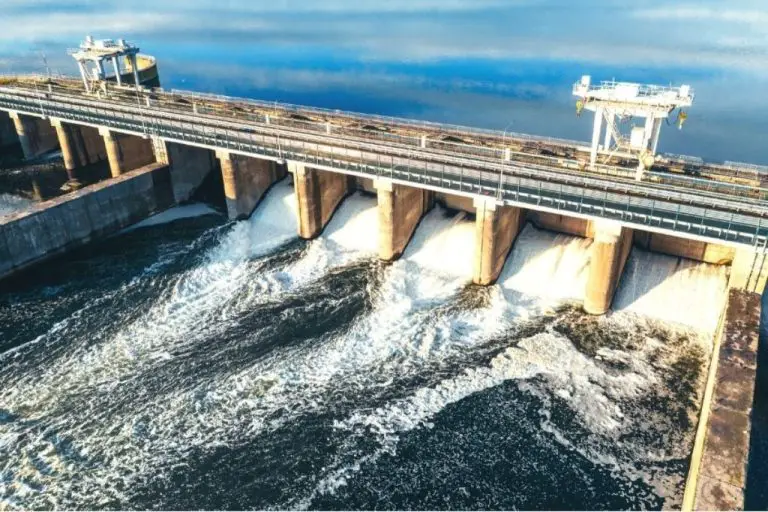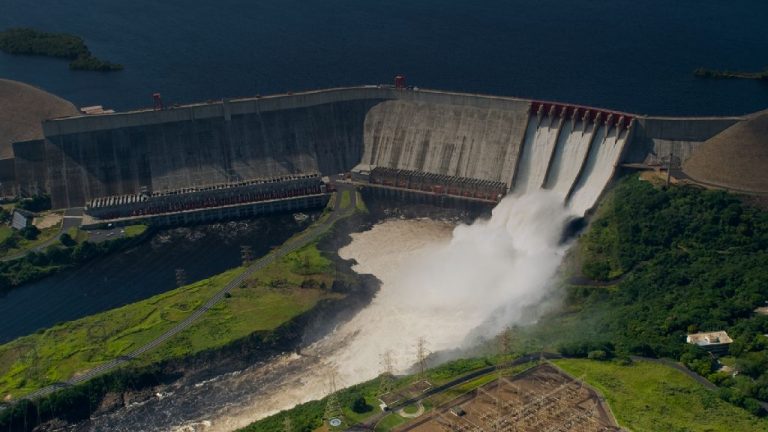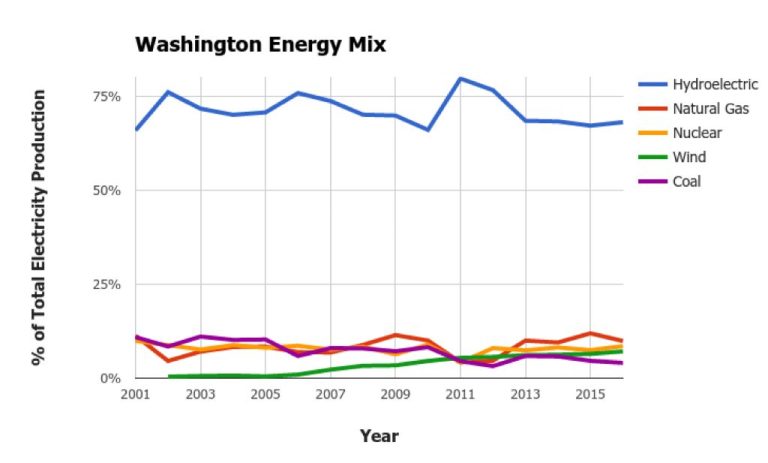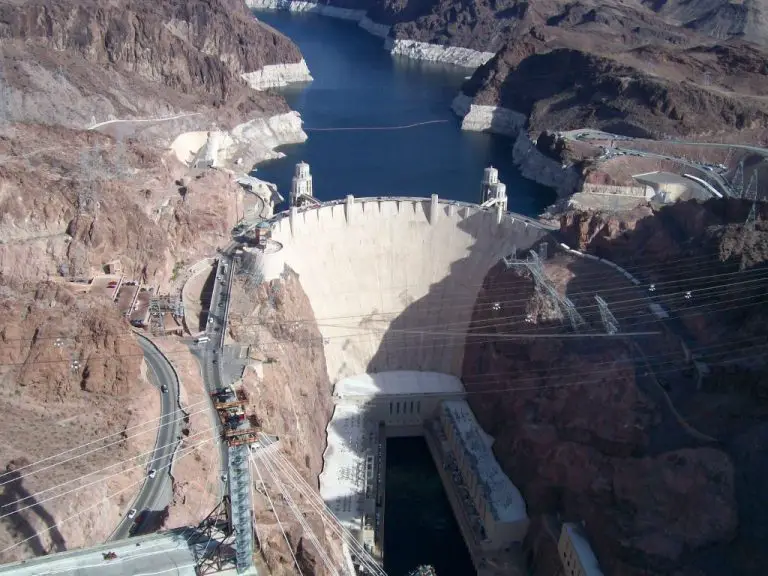How Many Hydroelectric Dams Are In The Usa?
Hydroelectric power is one of the oldest and most widely used forms of renewable energy. It utilizes the natural flow of water to generate electricity through turbines and generators. Hydroelectric dams are constructed on rivers to store water in reservoirs, control its flow, and harness its energy. This article provides an overview of hydroelectric dams in the United States, including their history, locations, operations, benefits, and environmental impacts.
Definition of Hydroelectric Dams
Hydroelectric dams are structures built across rivers to produce electricity from the flow of water. They harness the potential energy of water that builds up in the reservoir behind the dam, which flows through tunnels and spins turbines connected to generators to produce electricity (USGS).
A typical hydroelectric dam includes a lake or reservoir to store water, an intake that controls water flow, a turbine connected to a generator, and electrical equipment to transmit power. When water is allowed to flow from the reservoir through the intake and down through the turbines, it spins them and activates the generator to produce electricity. The water continues flowing downstream past the dam. The height between the reservoir and turbines creates hydraulic head, which determines the amount of power that can be generated (TVA).
By controlling the flow rate of water and using very little water over time, hydroelectric dams provide a renewable and efficient way to generate electricity from the kinetic energy of flowing water.
History of Hydroelectric Dams in the US
Some of the earliest hydropower developments in the United States occurred in the late 19th century. According to the U.S. Department of Energy, the first hydroelectric power plant was built at Niagara Falls in 1879 History of Hydropower. In the 1880s, several small hydropower plants were installed including at Grand Rapids, Michigan in 1880, Ottawa, Ontario in 1881, Dolgeville, New York in 1881, and Niagara Falls in 1882 A brief history of hydropower. These early hydropower plants helped drive the growth of industries and cities across the country.
In the early 20th century, larger hydropower projects were constructed including major dams like the Hoover Dam completed in 1936. The Hoover Dam was one of the largest hydroelectric projects in the world at the time and helped spur development in the Western United States History of Hydropower.
Total Number of Dams
According to the U.S. Energy Information Administration, there are over 2,300 hydroelectric power plants in the United States as of 2020 (Where hydropower is generated – U.S. Energy Information Administration). The number of hydroelectric dams has grown steadily over the past century. In 1940, there were less than 1,000 hydroelectric dams, and by 1980 that number grew to over 1,800. The period from 1940-1980 saw rapid dam construction, especially in the western U.S., as part of development projects like the Tennessee Valley Authority and Columbia River dams.
Currently, the western states of Washington, California, and Oregon contain over half of the country’s hydroelectric dams. The number of dams has leveled off since the 1980s due to environmental concerns and suitable dam sites already being utilized. However, existing dams have expanded their generating capacity through turbine upgrades and efficiency improvements to increase power output. Overall, hydroelectric power accounts for over 6% of total U.S. electricity generation as of 2020.
Largest Hydroelectric Dams
The largest hydroelectric dam in the United States is the Grand Coulee Dam on the Columbia River in Washington state. With a capacity of 6,809 megawatts, Grand Coulee is one of the largest hydroelectric plants in the world.
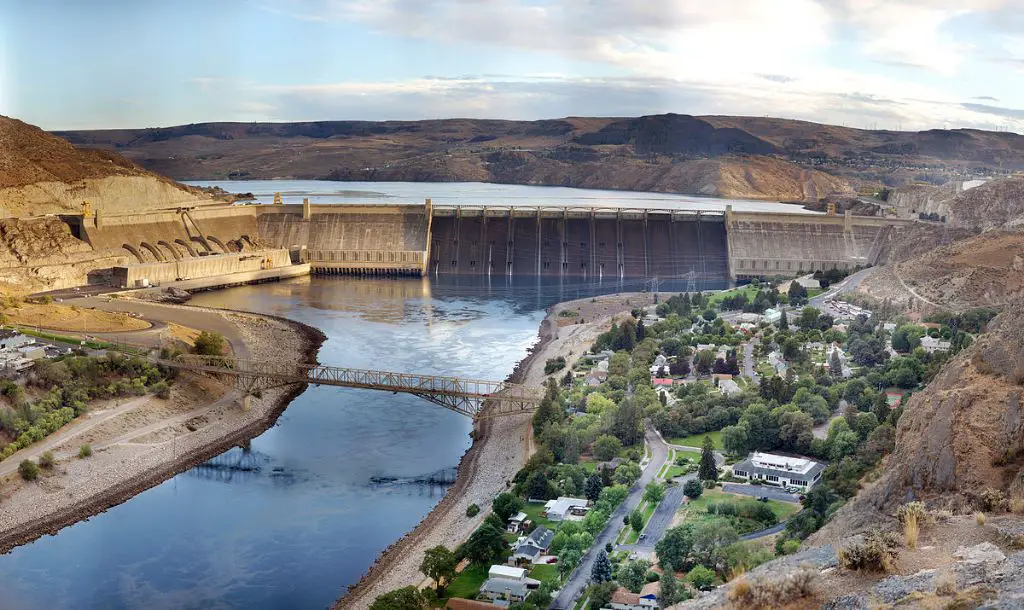
Other major hydroelectric dams in the US include:
- Robert Moses Niagara – Located on the Niagara River between New York and Ontario, Robert Moses Niagara has a capacity of 2,525 megawatts.
- Chief Joseph Dam – This dam on the Columbia River in Washington has a capacity of 2,620 megawatts.
- John Day Dam – Also located on the Columbia River in Oregon and Washington, the John Day Dam has a capacity of 2,160 megawatts.
- Hoover Dam – Spanning the Colorado River between Nevada and Arizona, Hoover Dam has a capacity of 2,080 megawatts.
The top 5 largest dams account for over half of all US hydroelectric capacity. Other major dams with capacities over 1,000 megawatts include Glen Canyon, The Dalles, Bonneville, and Oahe Dams.
Locations of Dams
There are over 2,000 hydropower dams located throughout the United States, primarily concentrated in the Pacific Northwest, California, the Midwest, and the Northeast regions. The largest concentration of dams are situated along major river systems like the Columbia River basin, Colorado River basin and the Tennessee River system.
The Columbia River system, which flows between Oregon and Washington state, contains over 60 hydroelectric facilities, including Grand Coulee Dam, the largest hydroelectric power producer in the United States. Other major dams on the Columbia River include Bonneville, John Day, and Dalles.
In California, large dams are located on the Klamath River, including Copco 1 Dam, Copco 2 Dam and Iron Gate Dam. Major dams are also situated along the American River, including Folsom Dam and Nimbus Dam.
The Colorado River system contains major dams like Hoover, Davis and Parker. Large hydropower facilities in the Midwest are located primarily on the Missouri River basin and Ohio River basin.
The Tennessee Valley Authority operates 29 hydropower dams in the Southeastern U.S. along the Tennessee River and its tributaries. Major facilities include Kentucky Dam, Fontana Dam and Wilson Dam.
Ownership and Operations
The ownership and operation of hydroelectric dams in the United States is divided between public and private entities. According to the National Hydropower Association, around 52% of hydroelectric generation in the U.S. is owned by federal agencies like the Bureau of Reclamation, Army Corps of Engineers, and others [1]. These dams were built not just for power generation but also for purposes like irrigation, navigation, and flood control.
The remainder of hydroelectric facilities are owned by private utilities, independent power producers, rural electric cooperatives, municipalities, and industrial companies [2]. Major private operators of hydroelectric dams include companies like Duke Energy, Idaho Power, and Avangrid. Overall, the private sector owns around 70% of total hydroelectric capacity in the country.
In terms of operations, roles are divided between the owner and licensed federal agencies. Owners are responsible for maintenance and upkeep. Federal regulators like FERC license projects and oversee dam safety and environmental regulations.
Benefits
Hydroelectric dams provide many benefits beyond just generating electricity. According to the U.S. Department of Energy[1], hydropower helps provide affordable and reliable electricity. The reservoirs behind dams can also offer recreation opportunities like boating, swimming, and fishing. Hydroelectric facilities provide flood control by regulating water flows and river levels. Dams help control flooding downstream, and the reservoir areas can absorb extra water during periods of high precipitation.
According to the U.S. Geological Survey[2], hydroelectricity promotes stable electricity prices because the fuel source, water, is not subject to market fluctuations like fossil fuels. The reservoirs behind dams also increase the supply of freshwater available for drinking, irrigation, and industrial uses.
Overall, hydroelectric dams provide clean renewable energy, recreation, and improved water resource management through flood control and access to freshwater supplies.
Environmental Impacts
Hydroelectric dams can have major environmental impacts on ecosystems and wildlife habitats. When a dam is constructed, the flooding of land upstream creates a reservoir that can cover hundreds of square miles of forests, fields, wildlife habitats and agricultural lands. This drastically alters the ecology and can destroy habitats for endangered or threatened species. Sedimentation is another major issue, as the flow of sediments down rivers is disrupted by dams, causing buildup upstream and erosion downstream.1
According to the U.S. Geological Survey, hydroelectric projects can obstruct fish migration and affect their population numbers and diversity. Dams disrupt the flow, temperature, and oxygen levels of rivers, harming the lifecycles of fish and other freshwater species. Reservoirs may lack oxygen, especially in the deeper parts, resulting in fish die-offs.2
The U.S. Energy Information Administration reports that dams, reservoirs and hydroelectric generator operations can greatly impact wildlife habitats and vegetation. Wildlife can be injured or killed by turbines and illegal fishing and hunting may increase with easier reservoir access.3
Future Outlook
The future growth potential for hydroelectric power in the United States looks promising according to the Hydropower Vision report by the Department of Energy1. The report projects that U.S. hydropower capacity could nearly double by 2050 if technology advancements continue and new innovative market mechanisms are implemented. Major growth areas include upgrading existing infrastructure, developing new stream-reach development projects, and increasing pumped storage capacity.
However, concerns remain around droughts, floods, and climate change which can negatively impact hydropower generation as noted in a recent PreventionWeb article2. While hydropower is an essential renewable energy source for the U.S. electric grid, its future contributions could be limited by water resource constraints. More research into climate resiliency will be needed.
Overall the future of hydropower looks promising in the U.S. if technology, markets, and environmental sustainability can be balanced. Continued innovation and investment will be required to upgrade America’s aging hydropower infrastructure and expand capacity to its full potential.

